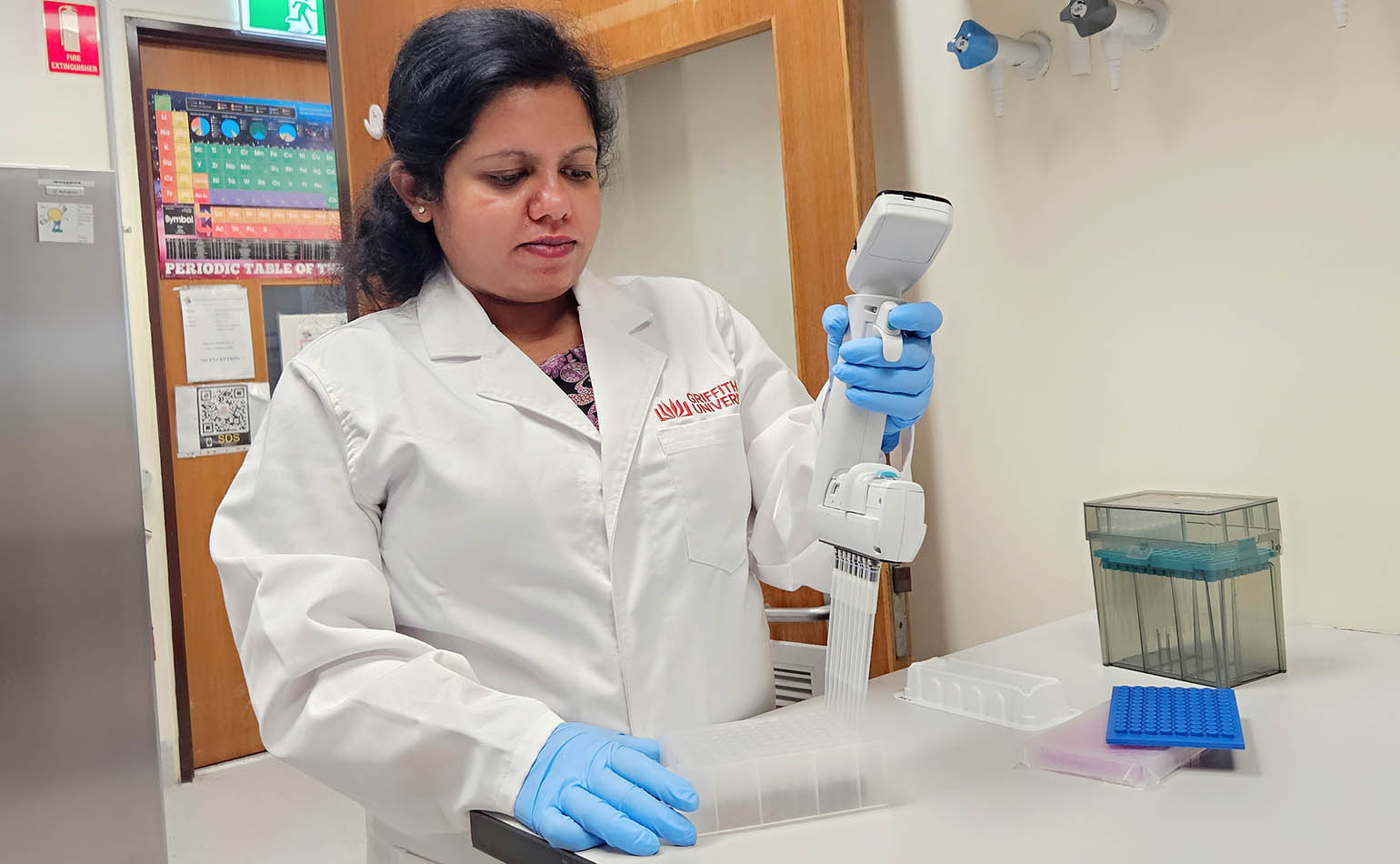Sustainable agricultural ecosystems rely on healthy soil that supports beneficial organisms and functions. Environmental stressors such as drought, heat, fire, and compaction affect soil properties and can lead to reduced soil health.
To help address these challenges, concepts such as soil resistance and resilience have emerged to evaluate soil health and sustainability. Resistance refers to the soil’s ability to withstand environmental and human-caused pressures while maintaining its functions. While resilience denotes the capacity of soil to recover its functional and structural integrity after experiencing a disturbance.
While our understanding of soil health and how to build soil resilience is growing, we still do not have an acceptable method for describing soil resilience. Enter Griffith University’s Dr Mehran Rezaei Rashti and his Soil CRC project team, who are measuring soil resilience against diverse environmental stressors.
“Our research team is working to understand the relationship between ecosystem-based management practices, like cover cropping and regenerative farming, and improvement of soil organic carbon and resilience,” Dr Rezaei Rashti explained.
“This project is using Soil CRC field trials and paired sites to quantitatively describe soil functional resilience and understand which farming practices and soil organic carbon pools contribute to this resilience.”
As part of the research, the project team recently conducted a review on the effects of drought stress on soil microbial functional resistance and resilience, emphasising the implications for sustainable soil management practices.
“Soil properties such as microbial biomass and respiration can serve as crucial indicators of soil health, particularly under increasing drought stress,” Dr Rezaei Rashti said. “Therefore, a better understanding of microbial dynamics becomes essential as climate change worsens drought frequency and intensity.”
“The review found that soil microbial respiration can rebound with the end of drought in various environmental conditions,” Dr Rezaei Rashti explained. “This recovery can be attributed to increased moisture availability and the rise in readily available organic carbon, which stimulates microbial activity and restores respiration rates to pre-drought levels.”
However, the recovery of microbial biomass is frequently more limited or slower than that of respiration, as microbial populations may require additional time to rebuild after periods of stress—especially if microorganisms are significantly affected during the initial stages of drought stress.
Dr Rezaei Rashti emphasised that understanding how soil microbes respond to drought is crucial for effective soil management.
“By knowing how they react and recover, we can develop strategies to support their resilience and maintain soil health, especially in the face of challenges like drought stress,” he said. “This knowledge can help us sustainably manage our soils for agricultural productivity and environmental conservation.”
Several factors contribute to the ability of soil microbes to withstand and recover from drought stress, including intrinsic soil characteristics, land management approaches, and prevailing climatic conditions. Soil texture, organic matter content, and nutrient availability are pivotal determinants shaping microbial responses to drought stress. For instance, sandy soils, characterised by larger particles and lower water retention capacity, often exhibit increased sensitivity to drought compared to clay soils, which retain moisture more effectively. The abundance of organic matter and nutrients in the soil greatly influences microbial activity and resilience, with richer soils generally supporting more robust microbial communities capable of better surviving drought conditions.
Innovative management practices offer promising ways for supporting microbial biomass resilience to drought stress. Strategies such as the application of organic amendments, implementation of cover cropping, and adoption of reduced tillage methods have been shown to foster the accumulation of soil organic matter and enhance microbial diversity. These practices contribute to the strengthening of microbial biomass and activity, even in the face of drought conditions.
Dr Rezaei Rashti’s project team initiated several experiments aimed at understanding how improved management practices influence soil responses to drought stress, comparing two distinct soil management regimes: conventional and improved soil management.
“We worked with our grower group participants Central West Farming Systems, Soils for Life, Herbert Cane Productivity Services and Facey Group, along with the Department of Primary Industries and Regions in South Australia, to collect soil samples from diverse agricultural sites with varying management histories,” Dr Rezaei Rashti said.
These samples covered a range of farm management practices and treatments:
- Cover crop management in Condobolin, NSW, and Canberra, ACT
- Different tillage practices, stubble conservation, and legume cultivation during fallow periods in Ingham, QLD
- Soil disturbance treatments (e.g. Bednar) in Wickepin, WA
- Lime application in SA.
Dr Rezaei Rashti said the findings underscore the potential of long-term adherence to specific management practices (such as cover cropping, minimum tillage, and Bednar treatment) to enhance soil carbon and nitrogen content, alongside microbial metabolic function.
He concluded that further research is necessary to explain the underlying mechanisms governing soil resistance and resilience, thereby guiding the development of more robust and adaptive soil management practices in the face of changing environmental conditions.
“By prioritising soil health and resilience, we can safeguard the vital role of soil in sustaining life on Earth for future generations.”
Resilience to drought is currently being assessed in-field at a 20-year-old field trial based at Wollongbar Primary Industries Institute in northern NSW. Program Leader Dr Lukas Van Zwieten said, “These new metrics for assessing the resistance and resilience will go a long way towards helping farmers manage impacts of stressors such as drought, through understanding the role of soil management and new practices or amendments.”
This project is a collaboration between Griffith University, NSW Department of Primary Industries, Department of Primary Industries and Regions SA, Central West Farming Systems, Herbert Cane Productivity Services, Soils for Life, Facey Group, and the Australian Organics Recycling Association (AORA).
Find out more
Related journal article: The role of edaphic variables and management practices in regulating soil microbial resilience to drought – A meta-analysis

